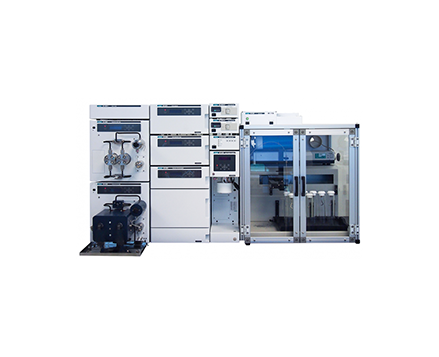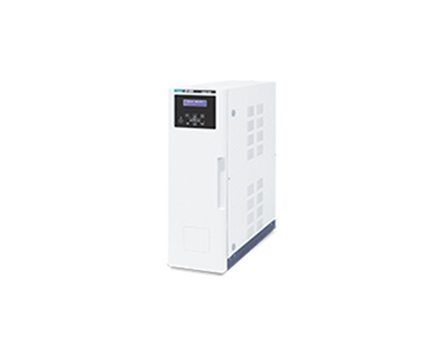Semi-Preparative Separation of Berberine in Coptis Japonica
January 5, 2024
Introduction
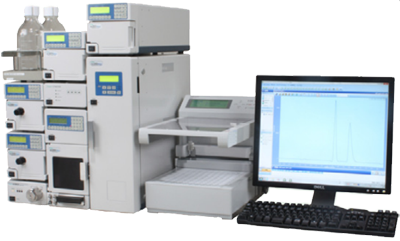
Berberine is a natural medicine derived from the flowering plant Coptis japonica and is reputed to have beneficial effects in the treatment of conjunctivitis and stomatitis as well as being a stomachic, intestinal remedy and antidiarrheic. It is suggested that berberine, one of alkaloids contained in Coptis japonica, which has yellow color and bitter taste may have antibacterial and anti-inflammatory effects. This LC application shows the separation of berberine obtained from powder extracts of Coptis japonica using analytical HPLC, the separation is scaled-up using semi-preparative HPLC for isolation and purification.
Experimental
Equipment
| Conventional HPLC | |
|---|---|
| Eluent Pump: | PU-2089 |
| Autosampler: | AS-2057 |
| Column oven: | CO-2060 |
| Detector: | MD-2018 |
| Semi-Preparative HPLC | |
|---|---|
| Eluent Pump: | PU-2086 |
| Autosampler: | AS-2058 |
| Column oven: | CO-2060 |
| Detector: | MD-2018 |
| (with semi-prep. cell) | |
| Chromatography data system: | ChromNAV |
| Fraction collector: | ADVANTEC SCF 122SC |
| Fraction collector controller: | FC-2088-30 |
Conditions
| Conventional HPLC | |
|---|---|
| Column: | YMC-PACK Pro C18 |
| (4.6 mm ID x 250 mmL, 5 µm) | |
| Eluent: | 0.1% TFA in Acetonitrile / Water (30/70) |
| Eluent flow rate: | 1.0 mL/min |
| Column temp.: | 25°C |
| Wavelength: | 220 ~ 450 nm, 345 nm |
| Injection volume: | 10 µL |
| Standard sample: | Powdered Coptis japonica |
| (0.5 g/50 mL in methanol / 10% hydrochloric acid (100/1)) |
| Semi-Preparative HPLC | |
|---|---|
| Column: | YMC-PACK Pro C18 |
| (20 mm ID x 250 mmL, 5 µm) | |
| Eluent: | 0.1% TFA in Acetonitrile / Water (30/70) |
| Eluent flow rate: | 15 mL/min |
| Column temp.: | 25°C |
| Wavelength: | 345 nm |
| Injection volume: | 5 mL |
| Standard sample: | Powdered Coptis japonica |
| (0.5 g/50 mL in methanol / 10% hydrochloric acid (100/1)) |
Preparation (extraction)
- Weigh 0.5 g of powdered Coptis japonica and place in a centrifuge tube.
- Add 30 mL of methanol/10% hydrochloride mixture (100/1) and mix for 15 minutes.
- Centrifuge (3,000 rpm, 10mim) and decant the supernatant into a 50 mL measuring flask.
- Add 20 mL of methanol/10% HCl mixture (100/1) to the residue and repeat the procedure.
- Add methanol/10% HCl mixture (100/1) to the collected supernatant in measuring flask and make up to 50 mL.
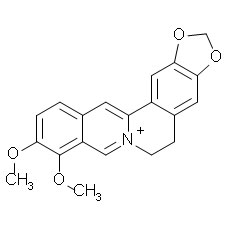
Keywords
742025H, Analytical separation, Semi-preparative separation, Coptis japonica, Berberine, Neutraceutical, Natural medicine
Results
Figure 2 is Chromatogram and contour plot of the extracts from Coptis japonica powder using conventional HPLC separation. Using the MD-2018 PDA detector and with spectral comparison, the separation of the target compound Berberine from the other components was optimized and good separation was achieved within 15 minutes.
Figure 3 is Chromatogram of the extract from Coptis japonica powder using semi-preparative HPLC scaled up from the analytical scale method. To optimize recovery of Berberine the injection volume was increased. However, this caused a problem as the elution power of the extraction solvent was stronger than the mobile phase, the target compound was not retained on column. To resolve this, the sample was diluted five times in water and 5 mL of the diluted sample was injected. Berberine was retained as shown in Figure 3. the separation efficiency increased but with a small sacrifice of peak shape. Figure 4 shows the fraction collected using the ChromNAV chromatography data system. The peak fraction and sample rack position for the target are highlighted in green. Figure 5 shows the sample purity chromatogram of this fraction under the same conditions as in Figure 2. It is confirmed that Berberine was isolated as single component.

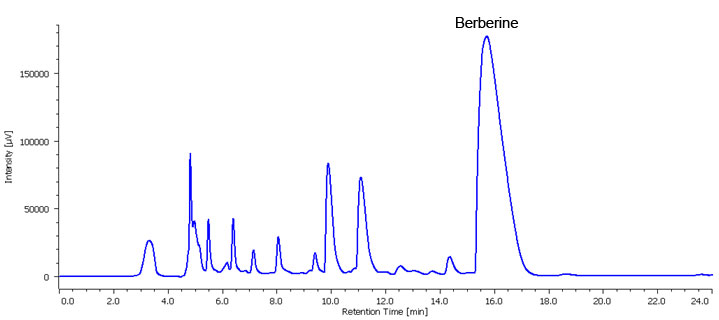
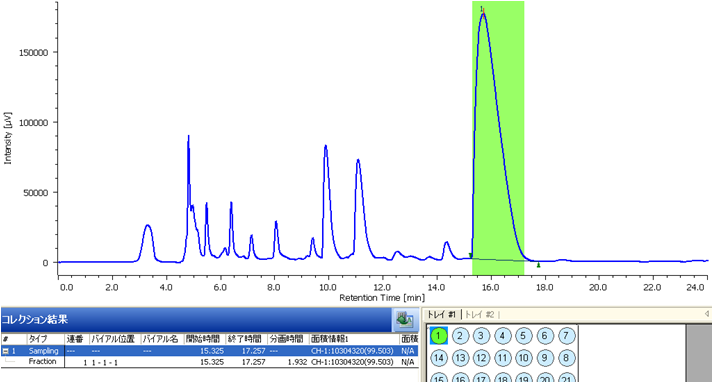
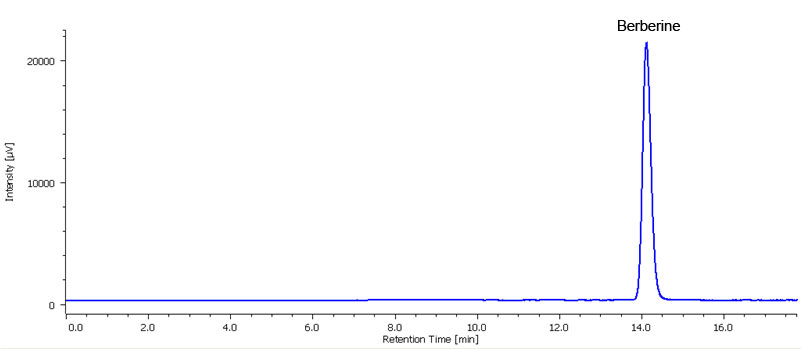
Featured Products:

Semi-Preparative Separation of Berberine in Coptis Japonica
Introduction

Berberine is a natural medicine derived from the flowering plant Coptis japonica and is reputed to have beneficial effects in the treatment of conjunctivitis and stomatitis as well as being a stomachic, intestinal remedy and antidiarrheic. It is suggested that berberine, one of alkaloids contained in Coptis japonica, which has yellow color and bitter taste may have antibacterial and anti-inflammatory effects. This LC application shows the separation of berberine obtained from powder extracts of Coptis japonica using analytical HPLC, the separation is scaled-up using semi-preparative HPLC for isolation and purification.
Experimental
Equipment
| Conventional HPLC | |
|---|---|
| Eluent Pump: | PU-2089 |
| Autosampler: | AS-2057 |
| Column oven: | CO-2060 |
| Detector: | MD-2018 |
| Semi-Preparative HPLC | |
|---|---|
| Eluent Pump: | PU-2086 |
| Autosampler: | AS-2058 |
| Column oven: | CO-2060 |
| Detector: | MD-2018 |
| (with semi-prep. cell) | |
| Chromatography data system: | ChromNAV |
| Fraction collector: | ADVANTEC SCF 122SC |
| Fraction collector controller: | FC-2088-30 |
Conditions
| Conventional HPLC | |
|---|---|
| Column: | YMC-PACK Pro C18 |
| (4.6 mm ID x 250 mmL, 5 µm) | |
| Eluent: | 0.1% TFA in Acetonitrile / Water (30/70) |
| Eluent flow rate: | 1.0 mL/min |
| Column temp.: | 25°C |
| Wavelength: | 220 ~ 450 nm, 345 nm |
| Injection volume: | 10 µL |
| Standard sample: | Powdered Coptis japonica |
| (0.5 g/50 mL in methanol / 10% hydrochloric acid (100/1)) |
| Semi-Preparative HPLC | |
|---|---|
| Column: | YMC-PACK Pro C18 |
| (20 mm ID x 250 mmL, 5 µm) | |
| Eluent: | 0.1% TFA in Acetonitrile / Water (30/70) |
| Eluent flow rate: | 15 mL/min |
| Column temp.: | 25°C |
| Wavelength: | 345 nm |
| Injection volume: | 5 mL |
| Standard sample: | Powdered Coptis japonica |
| (0.5 g/50 mL in methanol / 10% hydrochloric acid (100/1)) |
Preparation (extraction)
- Weigh 0.5 g of powdered Coptis japonica and place in a centrifuge tube.
- Add 30 mL of methanol/10% hydrochloride mixture (100/1) and mix for 15 minutes.
- Centrifuge (3,000 rpm, 10mim) and decant the supernatant into a 50 mL measuring flask.
- Add 20 mL of methanol/10% HCl mixture (100/1) to the residue and repeat the procedure.
- Add methanol/10% HCl mixture (100/1) to the collected supernatant in measuring flask and make up to 50 mL.

Results
Figure 2 is Chromatogram and contour plot of the extracts from Coptis japonica powder using conventional HPLC separation. Using the MD-2018 PDA detector and with spectral comparison, the separation of the target compound Berberine from the other components was optimized and good separation was achieved within 15 minutes.
Figure 3 is Chromatogram of the extract from Coptis japonica powder using semi-preparative HPLC scaled up from the analytical scale method. To optimize recovery of Berberine the injection volume was increased. However, this caused a problem as the elution power of the extraction solvent was stronger than the mobile phase, the target compound was not retained on column. To resolve this, the sample was diluted five times in water and 5 mL of the diluted sample was injected. Berberine was retained as shown in Figure 3. the separation efficiency increased but with a small sacrifice of peak shape. Figure 4 shows the fraction collected using the ChromNAV chromatography data system. The peak fraction and sample rack position for the target are highlighted in green. Figure 5 shows the sample purity chromatogram of this fraction under the same conditions as in Figure 2. It is confirmed that Berberine was isolated as single component.




Keywords
742025H, Analytical separation, Semi-preparative separation, Coptis japonica, Berberine, Neutraceutical, Natural medicine

 Download This Application
Download This Application
